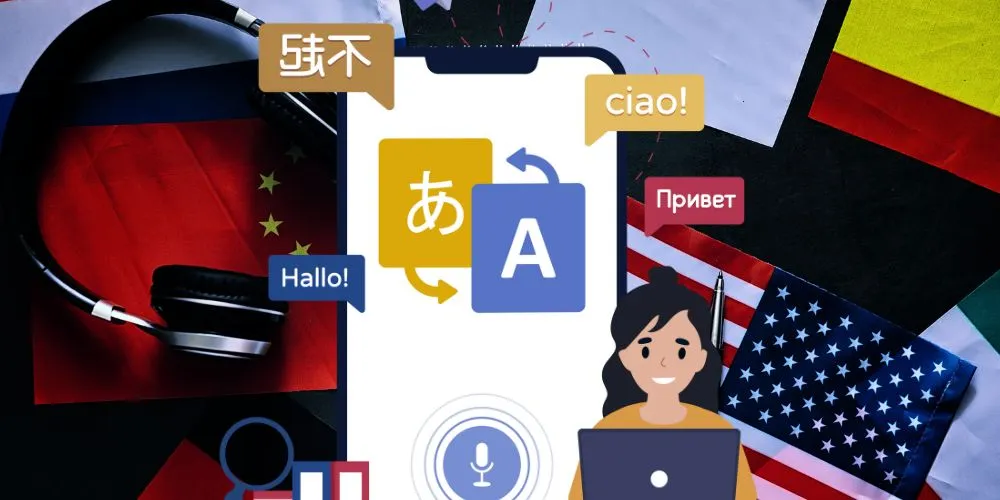Effective communication is paramount in an increasingly interconnected world where individuals, businesses, and cultures interact on a global scale. Language, however, has been a longstanding barrier to seamless interaction. The complexities of language often hinder clear communication, leading to misunderstandings and missed opportunities. Fortunately, the rapid advancements in Artificial Intelligence (AI) have ignited the development of AI-powered language translation, a technological breakthrough poised to bridge these linguistic divides and reshape how the world communicates.
What is AI-Powered Language Translation?
At its core, AI-powered language translation is a sophisticated fusion of AI and machine learning, working in harmony to automatically translate text or speech from one language to another. Unlike earlier rule-based translation systems, AI-driven translation harnesses the power of deep learning models, with neural machine translation (NMT) at the forefront. NMT involves neural networks that mimic the human brain’s interconnected neurons, enabling the system to decode linguistic nuances, maintain context, and produce linguistically accurate and contextually meaningful translations.
Components and Mechanisms
The intricate machinery of AI-powered language translation comprises several key components and mechanisms that work seamlessly together to unravel and recreate the intricate fabric of language across linguistic boundaries.
Neural Machine Translation (NMT)
Neural networks, the cornerstone of NMT, simulate the cognitive processes of human brains in processing and translating text. This approach empowers the system to capture context, idiomatic expressions, and linguistic subtleties, resulting in accurate and fluent translations.
Deep Learning
In the realm of AI-powered translation, deep learning takes center stage. This subset of machine learning equips translation models to absorb patterns and relationships from extensive datasets. Through rigorous training on multilingual corpora, these models grasp the intricate mappings between languages and develop an understanding of the contextual intricacies that govern the translation process.
Attention Mechanisms
Attention mechanisms are an ingenious feature that enables translation models to focus their cognitive resources on different segments of the input text while constructing the corresponding output. These mechanisms ensure the coherence and consistency of the translation, even in the face of complex sentence structures and nuanced semantics.
Encoder-Decoder Architectures
The underpinning architecture involves two networks: the encoder and the decoder. The encoder processes the source text and transforms it into a numerical representation, often referred to as a vector. The decoder then employs this numerical representation to generate the target translation, ensuring that the translation is both coherent and contextually accurate.
Benefits and Applications
The ramifications of AI-powered language translation extend far beyond syntax and semantics, permeating various sectors and industries and fostering a more interconnected global society.
Cross-Cultural Communication
Technology’s most striking impact lies in its ability to dismantle linguistic barriers. It empowers individuals, businesses, and governments to easily converse, collaborate, and forge connections across different languages. This, in turn, fuels international diplomacy, trade, and cultural exchanges, fostering a greater sense of global unity.
Business Expansion
For businesses, AI-powered language translation opens avenues to uncharted markets and diverse customer bases. The ability to communicate effectively in customers’ native languages can significantly boost sales, elevate brand visibility, and facilitate expansion into previously challenging regions.
Education and Research
This technology holds immense potential in education. It transforms educational materials into globally accessible resources by removing language barriers. Additionally, it enriches academic research by granting researchers access to a wider range of knowledge and insights across languages. This democratization of knowledge fuels cross-border collaboration and catalyzes the advancement of human understanding.
Travel and Tourism
With real-time AI-powered language translation apps, the world becomes more navigable for travelers. These applications ease the logistical challenges of traveling in foreign lands and facilitate genuine cultural immersion by enabling interactions with locals in their native language. Tourists can confidently explore new destinations, engage in meaningful conversations, and forge memorable connections.
Challenges and Considerations
While the prospects of AI-powered language translation are enticing, it is essential to acknowledge and address the challenges accompanying this transformative technology.
Accuracy and Context
AI models have made remarkable progress in comprehending context, idioms, and cultural references. However, achieving complete accuracy while capturing the subtle nuances of human expression remains a challenge. Particularly in intricate or domain-specific texts, preserving the original meaning without distortion remains an ongoing endeavor.
Ethical Considerations
When not carefully monitored, the translation process can inadvertently propagate biases in the training data, leading to politically incorrect, offensive, or culturally insensitive translations. As such, it is imperative to implement ethical guidelines and safeguards that ensure the technology’s responsible and culturally sensitive use.
Privacy and Data Security
Translating sensitive information, such as personal messages, documents, or confidential communications, raises legitimate concerns about data privacy and security. Users need assurance that their data will be protected and not exposed to unauthorized entities.
Resource-Rich Languages
While AI translation excels in languages with ample available resources, it may encounter challenges when dealing with languages that lack substantial digital footprints. The scarcity of high-quality training data for less commonly spoken languages can result in lower translation quality and accuracy.
Conclusion
AI-powered language translation emerges as a watershed development in global communication. Its capacity to surmount linguistic barriers and foster connections among individuals, cultures, and businesses is unprecedented. While challenges persist, including accuracy, ethical considerations, privacy, and resource disparities, the trajectory of this technology points toward continuous enhancement. As AI-powered language translation continues to evolve, it holds the potential to transform the global landscape into a more inclusive, collaborative, and interconnected domain. As such, it underscores the significance of responsible development and deployment practices that harness its full potential while ensuring its positive impact on the human experience.










